#goopy gyne bagha byne
Text
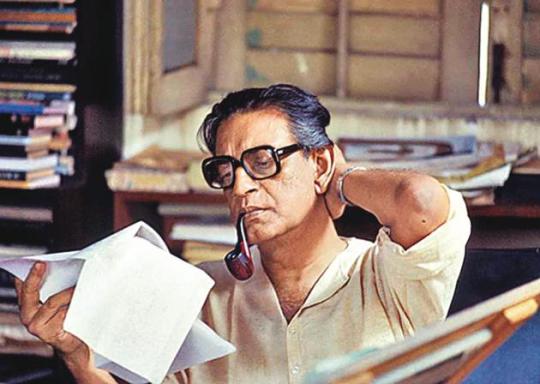

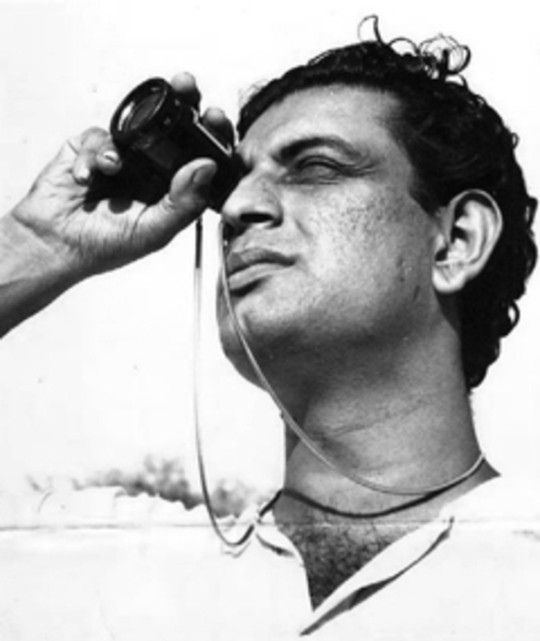

মহারাজারে আজ কোটি কোটি সেলাম
শুভ জন্মদিন মহারাজা
#it's ray's day after may day#satyajit ray#feluda#goopy gyne bagha byne#hirak rajar deshe#sonar kella#professor shanku#bengali literature#bengali culture#bengal#bengali music#desiblr#desi tumblr#desi teen#desi#desi tag
21 notes
·
View notes
Text
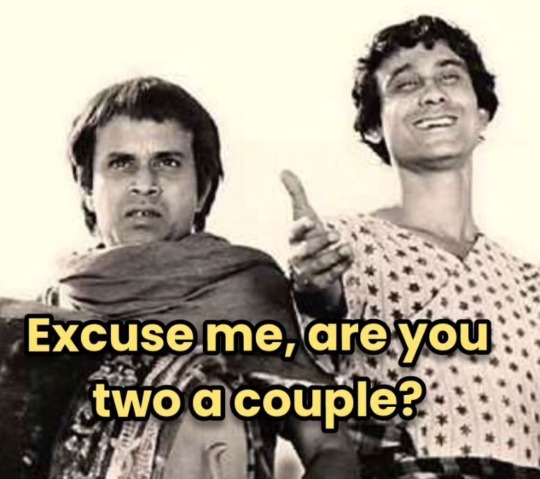
So guys do you think they explo - *gets shot*
2 notes
·
View notes
Link
The Goopy/Bagha soundtrack came up shuffle while I was working - it’s very cute, and everyone should listen to it.
2 notes
·
View notes
Text
INDIES 36 FINEST FILMS OF BENGALI CINEMA!
🧡💛💚💙💜🤎🤍💗💖🧡💛💚💙💜🤎🤍💗💖🧡💛💚💙💜🤎🤍💗💖🧡💛💚💙💜🤎🤍💗💖
INDIES 36 FINEST FILMS OF BENGALI CINEMA! :
.Pather Panchali (1955)
.Charulata (1964)
.Sudur Niharika (1976)
.Dibatrir Kabya (1973)
.Gumnaami (2019)
.Nayika Sangbad (1967)
.Nonte Fonte (2023)
.Akorik (2023)
.Surer Akashe (1988)
.Parineeta (1969)
.Arun Barun O Kiranmala (1979)
.Pratidwandi (2021)
.Nayak: The Hero (1966)
.Sector 5 (2012)
.Goopy Gyne Bagha Byne (1969)
.Rakta Palash (1962)
.Angshuman MBA (2023)
.Mahananda (2022)
.Robibaar (2019)
.Chokher Bali (2003)
.Ke Tumi (1964)
.Thagini (1974)
.Egaro (2011)
.Mukhosh (2020)
.Maayakumari (2023)
.Telephone (2015)
.Kacher Manush (2022)
.Titli (2002)
.Nimantran (1971)
.Parama (1985)
.Phoolan Devi (1985)
.Rosogolla (2018)
.Barnali (1963)
.Hatey Bazarey (1967)
.Mahanagar (1963)
.Kothay Tumi (2023) .
🧡💛💚💙💜🤎🤍💗💖🧡💛💚💙💜🤎🤍💗💖🧡💛💚💙💜🤎🤍💗💖🧡💛💚💙💜🤎🤍💗💖






2 notes
·
View notes
Text
BEST DIRECTORS IN CINEMA-3
Hi everyone! This blog is going to be the 3rd part of 8 Part Series of who I think are the Best Directors Cinema as ever seen
And today I will be talking about
SATYAJIT RAY

Satyajit Ray (born May 2, 1921, Calcutta [now Kolkata], India—died April 23, 1992, Calcutta) was a Bengali motion-picture director, writer, and illustrator who brought the Indian cinema to world recognition with Pather Panchali (1955; The Song of the Road) and its two sequels, known as the Apu Trilogy. As a director, Ray was noted for his humanism, his versatility, and his detailed control over his films and their music. He was one of the greatest filmmakers of the 20th century.
(Early Life)
Ray was an only child whose father died in 1923. His grandfather was a writer and illustrator, and his father, Sukumar Ray, was a writer and illustrator of Bengali nonsense verse. Ray grew up in Calcutta (now Kolkata) and was looked after by his mother. He entered a government school, where he was taught chiefly in Bengali, and then studied at Presidency College, Calcutta’s leading college, where he was taught in English. By the time he graduated in 1940, he was fluent in both languages. In 1940 his mother persuaded him to attend art school at Santiniketan, Rabindranath Tagore’s rural university northwest of Calcutta. There Ray, whose interests had been exclusively urban and Western-oriented, was exposed to Indian and other Eastern art and gained a deeper appreciation of both Eastern and Western culture, a harmonious combination that is evident in his films.
(His Famous Works)
Ray's first film, Pather Panchali (1955) won eleven international prizes, including the inaugural Best Human Document award at the 1956 Cannes Film Festival. This film, along with Aparajito (1956) and Apur Sansar (The World of Apu) (1959), form The Apu Trilogy. Ray did the scripting, casting, scoring, and editing, and designed his own credit titles and publicity material. He also authored several short stories and novels, primarily for young children and teenagers. Popular characters created by Ray include Feluda the sleuth, Professor Shonku the scientist, Tarini Khuro the storyteller, and Lalmohan Ganguly the novelist.
(Filmmaking Style)
His Filmmaking
Ray had been subconsciously paying a tribute to Jean Renoir throughout his career, who influenced him the most.Ray considered script-writing to be an integral part of direction. Initially he refused to make a film in any language other than Bengali. In his two non-Bengali feature films, he wrote the script in English; translators adapted it into Hindustani under Ray's supervision.The narrative structure of Ray's films are represented by musical forms such as sonata, fugue and rondo. Kanchenjunga, Nayak and Aranyer Din Ratri are examples of this structure.
(His Filmography)
Ray made over 36 feature film in his 4 decade long. He made movies such as Pather Panchali in 1955,Aparajito in 1956,Parash Pathar and Jalsaghar in 1958, Apur Sansar in 1959, Devi in 1960. He made movies such as Teen Kanya in 1961, Kanchenjungha and Abhijan in 1962,Mahanagar in 1963,Charulata and Two I'm 1964,Kapurush-0-Mahapurush in 1965,Nayak in 1966,Chiriyakhana in 1967,Goopy Gyne & Bagha Byne in 1969,Aranyer Din Ratri and Pratiwandi in 1970, Seemabaddha and Sikkim in 1971,Inner Eyes in 1972,Ashani Sanket in 1973,Sonar Kella in 1974,Jana Aranyw in 1975,Bala in 1976,Shatranj ka Khilari in 1977,Joi Baba Felunath in 1979,Hirak Rajar Deshe and Pikoo in 1980,Sadgati in 1981,Ghare Bhare in 1984,Sukumar Ray in 1987,Ganashatru and Shakha Proshakha in 1990,Agantuk in 1990.
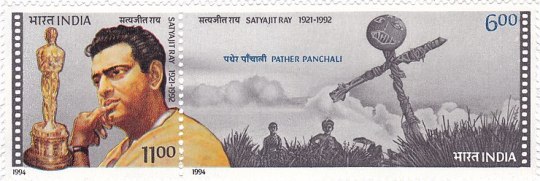
Satyajit Ray on 1994 stamp of India
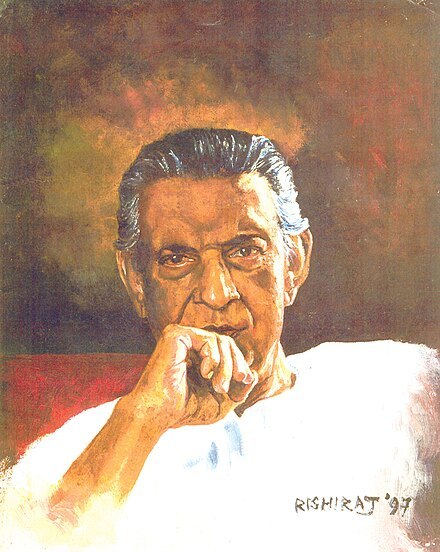
Portrait of Satyajit Ray
(Awards & Honors)
Ray received many awards including 36 National Film Awards. He was awarded the Dadasaheb Phalke Award in 1985 and Legion Of Honor in 1987. The Government of India also awarded him with Padma Bhusan in 1965. He also received a Lifetime Achievement Award in 1992 at the Academy of Motion Pictures Arts and Sciences. He also won the Golden Lion at the Venice Film Festival
(Legacy)
Ray is considered one of the greatest film directors of all time. He is a cultural icon in India and in Bengali communities worldwide. Following his death, the city of Calcutta came to a virtual standstill, as hundreds of thousands of people gathered around his house to pay their last respects. Ray's influence has been widespread and deep in Bengali cinema; many Bengali directors, including Aparna Sen, Rituparno Ghosh and Gautam Ghose as well as Vishal Bhardwaj, Dibakar Banerjee, Shyam Benegal and Sujoy Ghosh from Hindi cinema in India, Tareq Masud and Tanvir Mokammel in Bangladesh, and Aneel Ahmad in England, have been influenced by his craft.Beyond India, filmmakers Martin Scorsese, Francis Ford Coppola, George Lucas, James Ivory, Abbas Kiarostami, Elia Kazan, William Wyler,François Truffaut, John Huston, Carlos Saura, Isao Takahata, Oliver Stone,Quentin Tarantino, Wes Anderson,Danny Boyle and Christopher Nolan.
(Sources)
And that's it for this part folks, I'll meet you with another blog about some the Greatest Directors Cinema has ever seen, Until then
CIAO
1 note
·
View note
Text
INDIES 36 FINEST FILMS OF BENGALI CINEMA!
🧡💛💚💙💜🤎🤍💗💖🧡💛💚💙💜🤎🤍💗💖🧡💛💚💙💜🤎🤍💗💖🧡💛💚💙💜🤎🤍💗💖
INDIES 36 FINEST FILMS OF BENGALI CINEMA!
.Pather Panchali (1955)
.Charulata (1964)
.Sudur Niharika (1976)
.Dibatrir Kabya (1973)
.Gumnaami (2019)
.Nayika Sangbad (1967)
.Nonte Fonte (2023)
.Akorik (2023)
.Surer Akashe (1988)
.Parineeta (1969)
.Arun Barun O Kiranmala (1979)
.Pratidwandi (2021)
.Nayak: The Hero (1966)
.Sector 5 (2012)
.Goopy Gyne Bagha Byne (1969)
.Rakta Palash (1962)
.Angshuman MBA (2023)
.Mahananda (2022)
.Robibaar (2019)
.Chokher Bali (2003)
.Ke Tumi (1964)
.Thagini (1974)
.Egaro (2011)
.Mukhosh (2020)
.Maayakumari (2023)
.Telephone (2015)
.Kacher Manush (2022)
.Titli (2002)
.Nimantran (1971)
.Parama (1985)
.Phoolan Devi (1985)
.Rosogolla (2018)
.Barnali (1963)
.Hatey Bazarey (1967)
.Mahanagar (1963)
.Kothay Tumi (2023) .
🧡💛💚💙💜🤎🤍💗💖🧡💛💚💙💜🤎🤍💗💖🧡💛💚💙💜🤎🤍💗💖🧡💛💚💙💜🤎🤍💗💖
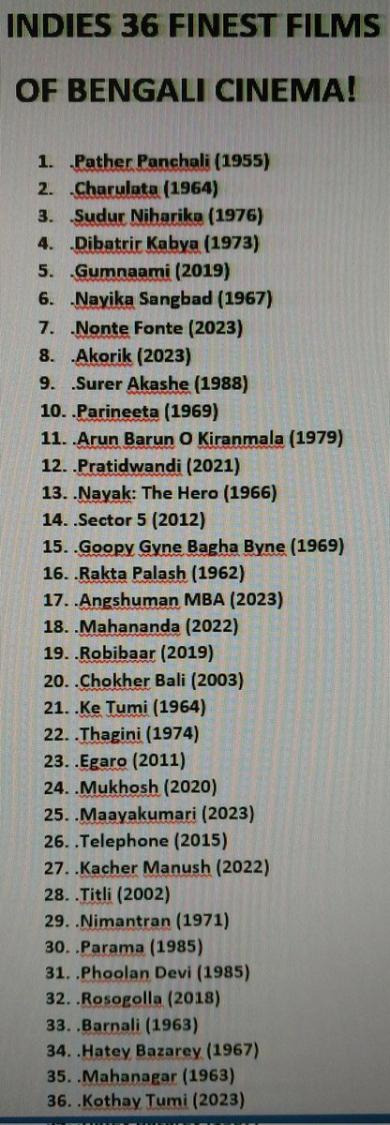





1 note
·
View note
Text
Mamata's Goopy Gyne Bagha Byne Reference on Demand for DA by Bengal Employees
Last Updated: February 18, 2023, 00:13 IST
File photo of West Bengal Chief Minister and TMC supremo Mamata Banerjee. (PTI File Photo)
Banerjee asserted that her government is making its best effort to balance the needs of all
Faced with growing demands for a hike in dearness allowance (DA) by West Bengal government employees, state Chief Minister Mamata Banerjee on Friday said she is not a…

View On WordPress
0 notes
Photo

Goopy Gyne Bagha Byne (Satyajit Ray, 1969)
17 notes
·
View notes
Photo







From the trailer of Goopi Gawaiya Bagha Bajaiya (Hindi, 2019) by Shilpa Ranade, an animated re-telling of Satyajit Ray’s Goopy Gyne Bagha Byne (Bengali, 1969)
#goopi gawaiya bagha bajaiya#shilpa ranade#goopy gyne bagha byne#satyajit ray#animation#animation gif#hindi cinema#cinema: hindi#indian cinema#gif
24 notes
·
View notes
Photo

Movie tribute #2
The Adventures of Goopy and Bagha (1969), Satyajit Ray.
#satyajit ray#indian cinema#cinema#movie#tribute#bengali#goopy gyne bagha byne#art#sketch#illustration
73 notes
·
View notes
Link
May 2, 2021
By Sundeep Bhutoria
KOLKATA (UN Chronicle) --
UDAYAN PANDIT: You first tell me if you are on my side or not...
BAGHA BYNE: We are on the side of good.
GOOPY GYNE: Yes, on the side of good.
This swift exchange between the schoolteacher-turned-rebel Udayan Pandit and the protagonists Goopy and Bagha in the film Hirak Rajar Deshe (Kingdom of Diamonds, 1980) sums up the universal humanism that permeated Satyajit Ray’s films. Simple yet profound.
This “children’s film for everyone” is a landmark work of art dealing with resistance against tyranny, with a people’s uprising against totalitarianism. Forty years later, Hirak Rajar Deshe—the tale of a teacher and his unlikely allies, Goopy the singer and Bagha the drummer, toppling a tyrant—rings truer than ever, as leaders around the world display streaks of the anti-democratic Hirak Raja, out to suppress any form of dissent or critique.
Hirak Rajar Deshe ends on a note of idealistic hope and popular rejoicing as the despot is subjected to his own magajdholai (brainwashing) machine, his giant statue is pulled down by the people, and freedom and justice are restored to the land.
The endings of Ray’s films often symbolize the humanism and hope that he came to typify as a unique creative force between 1955 and 1992.
5 notes
·
View notes
Photo

“Dance of the Ghosts.” An illustration by Upendrakishore Ray Chowdhury for the story Goopy Gyne Bagha Byne.
49 notes
·
View notes
Photo



Remembering Harindranath Chattopadhyay, a multi-talented artist, on his death anniversary today.
Harindranath Chattopadhyay juggled many roles in his lifetime. He was a renowned poet, dramatist, singer, songwriter, painter, Member of the Parliament and actor. Movie lovers will remember Chattopadhyay from his roles in Seemabaddha and Bawarchi. The actor who appeared in brief comic roles in the movies had a serious career in literature.
Born on April 2, 1898, in Hyderabad, Chattopadhyay belonged to an illustrious family. His father was a scientist. His mother was a singer. His elder sister, Sarojini Naidu, would go on to become one of the major leaders of the Indian independence movement.
Harindranath Chattopadhyay is best remembered for his role as Shiv Nath Sharma, the patriarch of the ironically named Shanti Niwas in Hrishikesh Mukherjee’s Bawarchi (1972). In Bawarchi, he also gave vocals to the song “Bhor Aayi Gaya Aandhiyara”.Two of the popular songs written by him for Hindi films are “My Heart Is Beating” from Julie (1975) and “Rail Gaadi Rail Gaadi Chhuk Chuuk ” from Aashirwad (1968). The entire songs of the film 'Aashirwad' was wriiten by him.
Harindranath Chattopadhyay often recited his poem "Rail Gaadi" on All India Radio. The song was originally sung by Ashok Kumar in the film Aashirwad.
He himself wrote the lyrics, composed the music and sang a few songs, notable among which were "Surya Ast Ho Gaya" and "Tarun Arun Se Ranjit Dharani". He also penned a number of poems for children in Hindi. His poems were appreciated even by the Nobel Laureate Rabindranath Tagore.
His cameo in two Satyajit Ray films, 'Goopi Gyne Bagha Byne' and 'Sonar Kella' has etched him in permanence.
He received the Padma Bhushan in 1973. He was married to Kamaladevi Chattopadhyay, a socialist women’s leader.
Harindranath Chattopadhyay passed away on June 23, 1990.
11 notes
·
View notes
Text
Movie Review

The magically musical duo of Goopy Gyne and Bagha Byne make a comeback in this sequel, where they are invited to the court of the Hirak Raja (The Diamond King) for their musical skills. They are to perform at the kingdom's Anniversary Celebrations.
Goopy and Bagha are bored with their lives as crown princes of Shundi and Halla. They are looking for a change, which comes in the form of a chance to visit Hirak (Land of Diamonds), known for its huge diamond mines. They happily set out for Hirak, unaware of the machinations of the King of Hirak (Utpal Dutt), who is a tyrant. Diamonds and riches get pent up in his treasuries, while his subjects starve and suffer. Those who protest are taken care of in the 'Jantarmantar', a chamber for brainwashing devised by the scientist (Santosh Dutta), who the king mocks calling as "Gobeshok Gobochondro Gyanotirtho Gyanorotno Gyanambudhi Gyanochuramoni." His ministers are mere puppets. The only enemy the king has in his land is Udayan Pandit (Soumitra Chatterjee). He is a school teacher and, more than that, he is a believer of values. The king forcefully closes his school down, and he flees to hide in the mountains.
Meanwhile, Goopy and Bagha are on their way to Hirak. By coincidence, they meet Udayan, who informs them of the king's true nature. The two impress Udayan with their magical powers, who makes plans to use them against the tyrant. Goopy and Bagha agree. The duo then head into Hirak, where they are welcomed with grandeur. They entertain the tyrant king, fooling him into believing that they think he is great. They rob the treasury (which was guarded by a tiger) using their magical music, to get diamonds for bribing the guards.
The king has his tricks, too. He captures Udayan and all his students, and takes them to the Jantarmantar for brainwashing. But Goopy Bagha have already reached there using their magical powers. They have also bribed the Gobeshok onto their side, with the guards. On reaching the laboratory, the king and his ministers are stunned magically by Goopy's singing and then pushed into the Brainwashing machine. After the king is brainwashed he turns to the good side, he then along with the villagers pull down his own statue situated at the center of the village, and everything goes back to normal in the land of hirak raja.
1 note
·
View note
Text
Toon Cinema gets a Ray of Hope and Joy
Toon Cinema gets a Ray of Hope and Joy
Main hoon naada,
tu pyjama
Tu hai lota, main
hoon paani
Main aam, tu gutli
Tu patakha, main sutli
(I’m the drawstring,
you’re the pyjamas
You’re the pot, I’m the water
I’m the mango, you’re the seed
You’re the cracker,
I’m the wick)
Goopy Gyne Bagha Byne receives the animation treatment
The quirky…
View On WordPress
0 notes
Text
Hrithik Roshan is in awe of rumored girlfriend Saba Azad's singing: 'You are an extraordinary human'
Hrithik Roshan is in awe of rumored girlfriend Saba Azad’s singing: ‘You are an extraordinary human’
Hrithik Roshan is in awe of actor Saba Azad’s singing prowess. The actor, posted a video on Instagram humming a Bengali song, left many impressed, including rumored boyfriend Hrithik.
Saba on Sunday shared a video which she said was recorded on “lazy evening chilling at home.” She revealed that the song is from legendary filmmaker Satyajit Ray’s 1969 film Goopy Gyne Bagha Byne that she first…
View On WordPress
0 notes